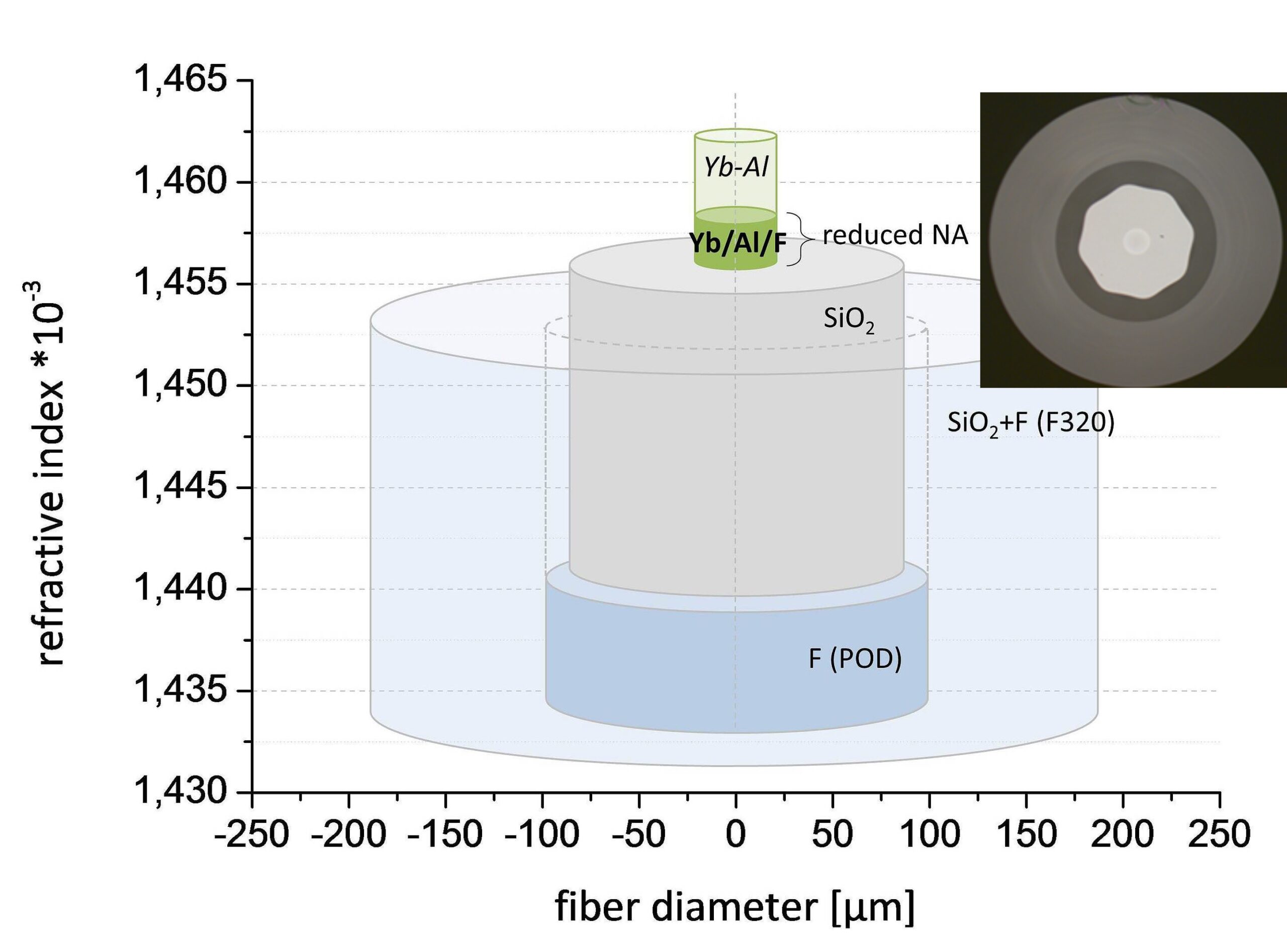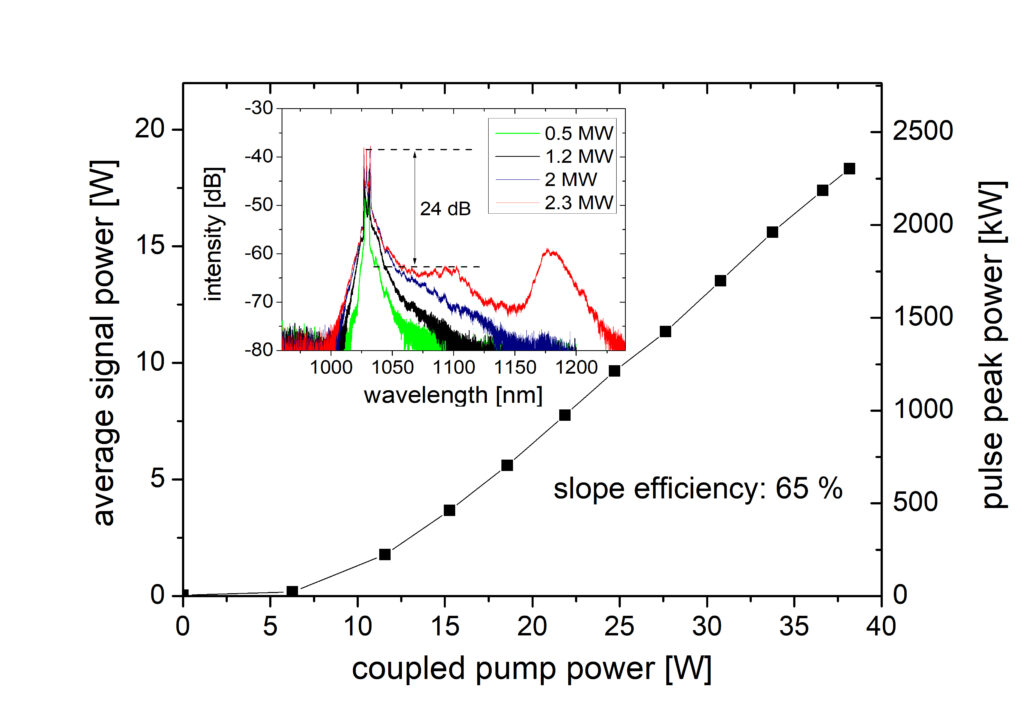- Home
- Research
- Fiber Photonics
- Research results
- Monolithic ultrafast fiber laser with 2MW peak power
Monolithic ultrafast fiber laser with 2MW peak power

18.01.2023
For the first time, a fluorine-counterdoped REPUSIL fiber with a large mode area was integrated into an ultrashort pulse amplifier to amplify high peak powers. Monolithic fiber integration and high beam quality are achieved through a local taper. A Yb fiber amplifier with almost diffraction-limited beam quality of M2 = 1.3 up to a peak pulse power of 2 MW was demonstrated.
As part of an international BMBF-funded industrial project, researchers at Leibniz-IPHT Jena have succeeded in generating maximum pulse peak power with excellent beam quality from laser fibers developed together with Heraeus Quartz Glass GmbH and sophisticated post-processing.
Fiber lasers and amplifiers are increasingly becoming the leading technology in industrial manufacturing for a variety of material processing applications due to their robustness, excellent beam quality, power and flexibility. A major challenge for commercial fiber lasers is the combination of high peak power with almost diffraction-limited beam quality and freedom of adaptation. For remote processes, e.g. the surface structuring of solar panels, high beam quality and ultra-short pulses with very high peak powers are crucial.
The approach pursued here to achieve peak power in the MW range from a single fiber with high beam quality is based on the use of local adiabatic tapers for stimulating and amplifying the fundamental mode of very short large-core, so-called LMA step-index fibers. These new LMA fibers were realized with the REPUSIL technology developed by IPHT and Heraeus Quarz Glass. A major challenge in fiber development is to introduce high rare earth doping concentrations while reducing the effective core NA to match the local taper to a singlemode seed fiber. This was achieved by counter-doping the core glass with fluorine (Image obove).

Using these novel fluorine-counterdoped LMA fibers, a pulse peak power of up to 2 MW with a pulse duration of 30 ps could be achieved with excellent beam quality M2≈1.3. The tapered fiber, which has a core diameter of 52 µm and a length of 0.75 m, shows hardly any significant stimulated Raman scattering in the monolithic amplifier at the highest pulse peak powers (Image left).
The results were published in the scientific journal Optics Letters. https://doi.org/10.1364/OL.394793
Funded by
Bundesministerium für Bildung und Forschung
Project Partners:
Dörte Schönfled, Andreas Langner, Gerhard Schötz
